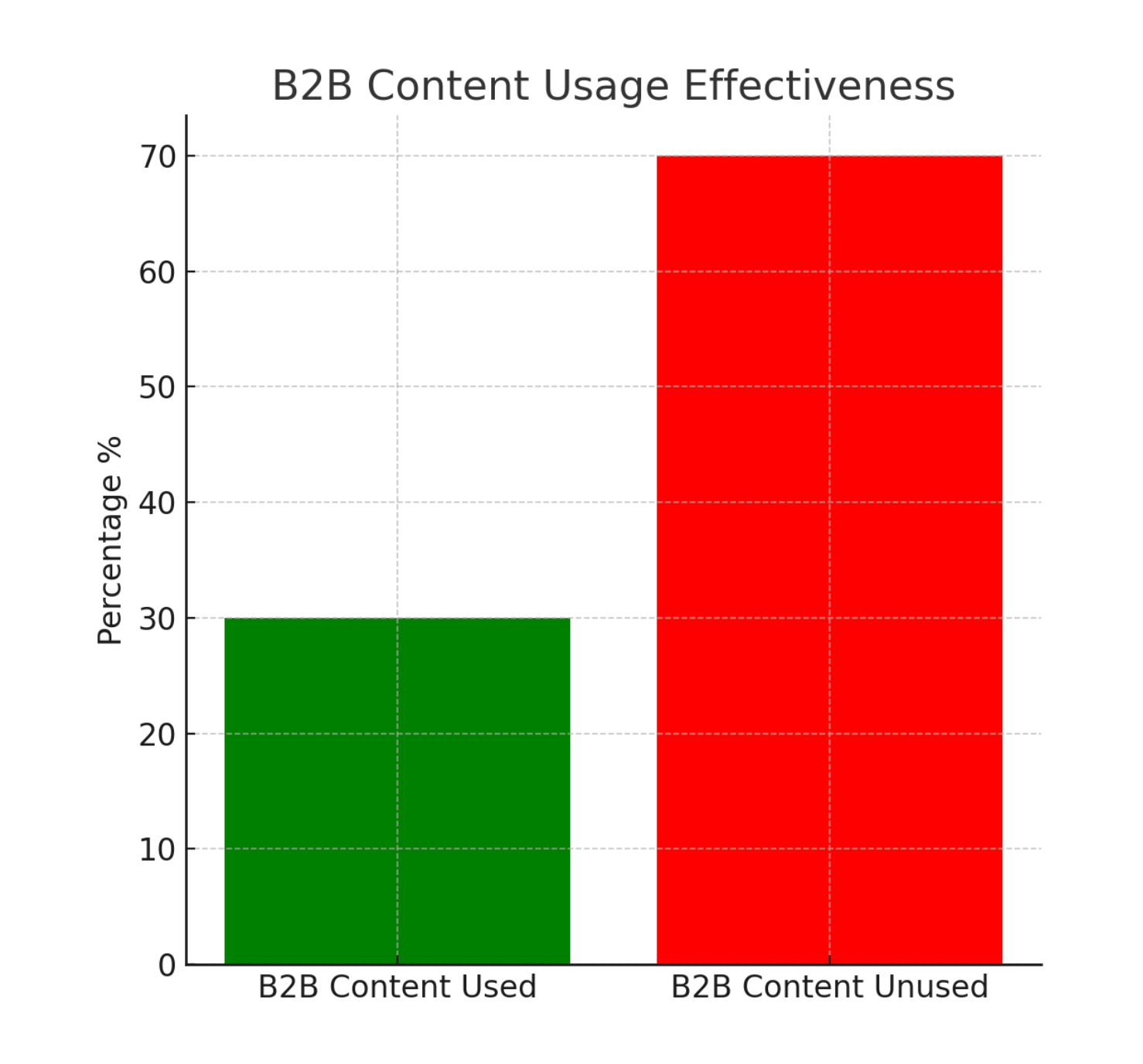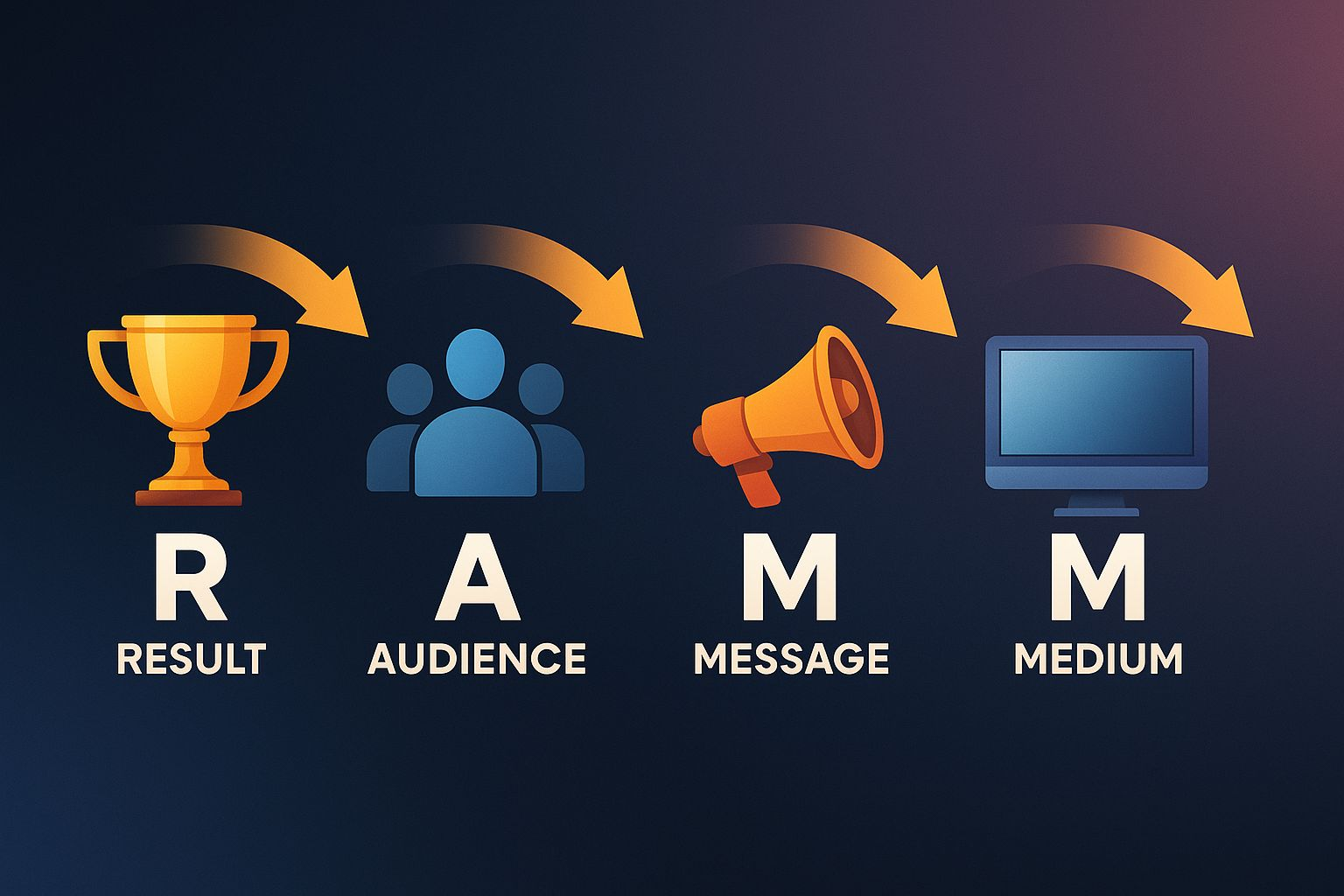Most marketing teams are working hard, but in the wrong order. They start with “we need a post”, “we need a video”, or “we need a campaign”, then retrofit the message and retrofit the audience. The result is noise, not movement.
It is like trying to launch a rocket from a canoe. You are expending energy, but you are not going anywhere that matters. Meanwhile, studies show that a lack of structure and clarity in campaigns is one of the biggest drivers of wasted budget and underperformance. (Hubspot)
When marketing runs this way, you see the symptoms everywhere: scattered campaigns, confused customers, ballooning budgets, and very little that ties back to commercial outcomes. Activity looks impressive on the surface, but dig into the numbers and it is painfully clear, effort is up, effectiveness is down. Research suggests that a large share of ad spend is wasted on the wrong audience, weak channels, or irrelevant messages. (Harvard)
There is a better way to design marketing so it delivers from the top line to the bottom line. At Step Change, this starts with a simple but powerful sequence: RAMM - Result, Audience, Message, Medium.

Insight
Many organisations are unknowingly running their marketing in reverse, starting with channels and content instead of clarity on the commercial outcome, which leads to wasted spend, fragmented messaging, and missed opportunities to move the metrics that actually matter.
So What is the Step Change?
Flip the order. Use the RAMM framework, Result > Audience > Message > Medium, to design every piece of marketing from the outcome backwards, so you speak to the right people, with the right message, in the right place, and stop paying for noise. This aligns with broader best practice: research consistently shows that campaigns built on clear objectives, defined audiences, and tailored messaging deliver stronger ROI than activity first approaches.

Result: Start With the Outcome
Before you brief a designer, write a post, or approve a media plan, get brutally clear on the result. What are you actually trying to change, revenue, qualified leads, retention, average order value, category entry points?
External benchmarks back this up. Guides on effective marketing and advertising objectives highlight that clear, measurable goals aligned with business strategy are the foundation of any successful campaign, enabling smarter spend and better performance tracking. Once you can articulate the commercial result in a single sentence, you can make sharper decisions about everything else: what success looks like, how you will measure it, and what “good” needs to be for this activity to be worth doing at all. (Harvard)
Audience: Decide Who Really Matters
Most teams try to talk to “everyone who might buy”, and end up resonating with no one. After the result, the next move is to define the smallest viable audience you need to move to achieve that outcome.
This is where you close the gap between budget and behaviour. Industry analyses show that billions of dollars are wasted every year on ads that never engage the right people, often because businesses rush into digital activity without clearly defining their audience or funnel. When you narrow the audience, you can afford to reach them with sufficient frequency and relevance to actually shift behaviour, rather than spraying thin impressions across the market. (Amra and Elma)
Message: Say What Moves the Needle
Only once you know the result and the audience do you earn the right to craft the message. Importantly, this is not “what we want to tell them about us”, it is “what they need to hear to take the next step toward the result”.
Customer centric marketing research consistently shows that messages tailored to real customer needs and motivations drive higher engagement, stronger conversion rates, and greater profitability. This is where you translate their pain points, drivers, and barriers into clear, compelling value, the single minded idea that makes action feel obvious and low risk. Done well, the message becomes a lever on the behaviour you want, not a laundry list of product features. (Audience X)
Medium: Choose the Channel Last
In most organisations, the conversation starts with the medium: “Should we be on TikTok?”, “We need a webinar”, “Let’s sponsor that event”. By the time anyone asks why, budgets are committed and objectives are an afterthought.
RAMM puts the medium last on purpose. Once you know the result, audience, and message, the right channels tend to reveal themselves, where your audience already pays attention, what context supports your message, and which mix of paid, owned, and earned will give you the highest ROI. Evidence from ROI driven and multichannel marketing studies shows that when brands use customer insights to select channels and sequence messages, they see better engagement, higher conversion, and more efficient spend than when they simply add more channels. (E-Commerce News)
From Chaos to Clarity
Using RAMM consistently shifts marketing from reactive to strategic. You stop chasing shiny objects and build systems that compound: clearer briefs, tighter creative, cleaner measurement, and a direct line of sight from activity to outcomes.
Harvard research emphasises that measurement grounded in business impact drives more confident decisions, better budget allocation, and stronger CFO confidence in marketing. This delivers tangible ROI improvements by focusing on what truly moves the business. (Harvard)
The payoff is tangible, less waste, more clarity, and a much bigger impact on the numbers that keep you in the game, and help you win it. It’s time to stop marketing backwards and reset around RAMM.
Marketing That Delivers From the Top Line to the Bottom Line
This is just the beginning. Get access to 50+ tools and tactics across strategy, conversion, execution, and optimisation with Complete Step Change.








